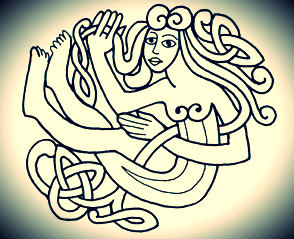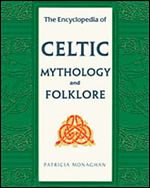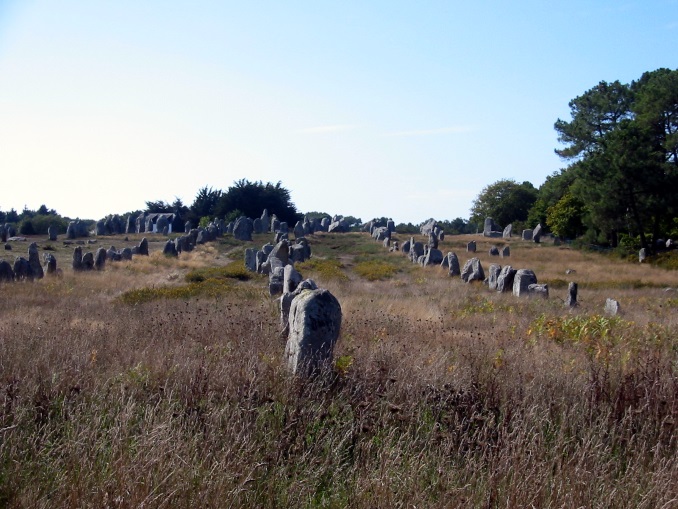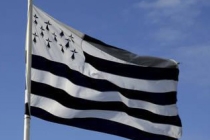Korrigans - Sirens of Breton Mythology

In the rich Celtic mythological tales of Brittany, the Korrigans form a group of female entities who are associated with rivers and wells. Sometimes they are described as fairy like creatures with beautiful golden hair. They are seen in some tales as changelings who can alter their shape.
In the 1911 seminal work “The Fairy-Faith in Celtic Countries” by W.Y. Evans-Wentz, the author describes the origins of the Korrigan myth: “In lower Brittany, which is the genuinely Celtic part of Amorica (Breton Peninsula) instead of finding a widespread folk-belief in fairies of the kind existing in Wales, Ireland and Scotland we find a widespread belief in the existence of the dead, and to a less extent in that of the Korrigan tribes. It is the Korrigan race, more than fairies, (which) forms a large part of the invisible inhabitants of Brittany”.
From a folklore tale cited by Evans-Wentz, we have a window into the rich oral tradition of Celtic myth in Brittany:
Towards midnight I was awakened by a terrible uproar; there were a hundred Korrigans dancing around the fountain. I overheard one of them say to the others; I have news to report to you , I have cast an evil spell upon the daughter of the King and no mortal will ever be able to cure her, and yet in order to cure her, nothing more would be needed than a drop of water form this fountain.

Patricia Monaghan in her 2004 The Encyclopedia of Celtic Mythology and Folklore describes the Korrigan as follows: “Korrigans were small fairies, less than two feet tall, and had translucent wasp like wings. Lovely woodland grottoes with running streams were especially attractive to Korrigans, who made their homes in such places. If contacted there, they could sometimes tell the future. Seeking them out could bring danger; however, for Korrigans like other fairies were immoral and might as readily steal a person or child as tell a fortune. Some Breton legends speak of Korrigans as doomed human souls, unhappily trapped through tragic death to wander the earth.”
Sexuality and immorality connected to the Korrigan is a common folkloric theme. They can lure men with their beauty and have the power to make them fall in love with them. If a man falls in love with a Korrigan they will kill him. Dr. James MacKillop, in his 1998 “Dictionary of Celtic Mythology”, describes the sexual component of the Korrigan myth as follows:
Wanton, Impish, sprightly female fairy of Breton folklore who desires sexual union with humans. Thought to be descended from ancient Druidesses, Korrigans are especially malicious towards celibate Catholic priests. Each Korrigan has the power to enmesh the heart of the most constant swain (country youth, lover or suitor) and doom him to perish for love of her.
Elements of the Christian folkloric traditions about the Korrigans bring into focus the tensions between the dying Celtic religious traditions and the growing power of the Christian religious establishment. Korrigans are depicted as a force that fought against the Christian conversion of their supernatural domain. “In Christian folklore Korrigans are portrayed most unfavorably, characteristically blamed for changeling substitutions.” (MacKillop) “In Brittany the old gods became Korrigans, while in other areas of the ancient Celtic world, we find magical beings whose behavior suggests they were originally divine. The persecution of earlier faiths by Christianity resulted in a fierce folkloric enmity between the Korrigans and celibate priests, who were the subject to endless lascivious temptation by the spirits.” (Monaghan)

Korrigans were also associated with Halloween, which has its origins in the old Celtic New Year on 31st October. On this night some say they can be seen, waiting for victims near the ancient megalithic dolmens, (tomb portal) Tumuli (ancient grave mounds) and Menhirs (large upright standing stone) that are found in abundance in Brittany; most famously in the Carnac area of Morbihan (famous as the site of over 10,000 Menhir), where Neolithic alignments of standing stones date back to the 5th millennium BC. The relationship between the Korrigans and pre-Celtic artifacts is described by Monaghan:
They derived most pleasure from circle dances within or near the pre-Celtic Stone Circles and megalithic shrines still found in Brittany.
Similarly, Evan-Weitz describes:
There is probably no other place in Celtic lands more congenial or more inspiring for writing down of one’s deeper intuitions about the Fairy faith, then Carnac, under the shadow of the pagan Tumulus.
Finally, the connection between these ancient artifacts, Korrigans and Breton Folk dance is made by Evans-Wentz as he cites the findings of a 19th century Folklorist:
When we hear how Korrigans dance the national Ronde or Ridde, at or in the pre-historic structures (rocks of the Korrigans) which with other ancient stone monuments and earthworks are still believed to be the favourite haunts of these kindred spirit-tribes, we see a physical folk-memory about a Korrigan …Breton dance is, therefore, most likely the memorial of an ancient initiation dance, religious in character.
Content type:
- Breton
Language:
- English
- Log in to post comments






